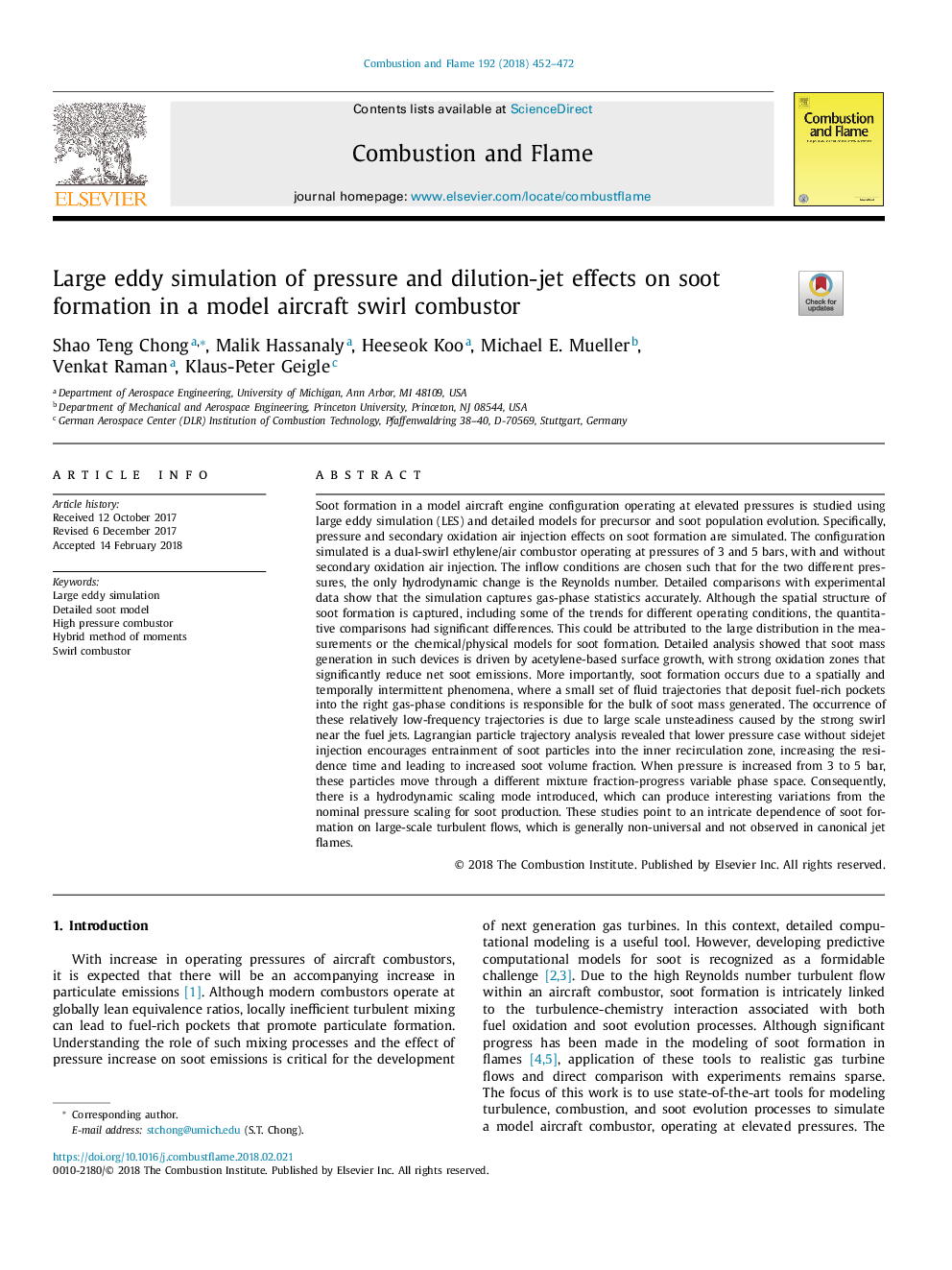| کد مقاله | کد نشریه | سال انتشار | مقاله انگلیسی | نسخه تمام متن |
|---|---|---|---|---|
| 6593700 | 1423545 | 2018 | 21 صفحه PDF | دانلود رایگان |
عنوان انگلیسی مقاله ISI
Large eddy simulation of pressure and dilution-jet effects on soot formation in a model aircraft swirl combustor
ترجمه فارسی عنوان
شبیه سازی چرخشی بزرگ از اثرات فشار و رقت جت بر روی تشکیل دوده در یک موتور توربینی متقاطع هواپیما مدل
دانلود مقاله + سفارش ترجمه
دانلود مقاله ISI انگلیسی
رایگان برای ایرانیان
موضوعات مرتبط
مهندسی و علوم پایه
مهندسی شیمی
مهندسی شیمی (عمومی)
چکیده انگلیسی
Soot formation in a model aircraft engine configuration operating at elevated pressures is studied using large eddy simulation (LES) and detailed models for precursor and soot population evolution. Specifically, pressure and secondary oxidation air injection effects on soot formation are simulated. The configuration simulated is a dual-swirl ethylene/air combustor operating at pressures of 3 and 5 bars, with and without secondary oxidation air injection. The inflow conditions are chosen such that for the two different pressures, the only hydrodynamic change is the Reynolds number. Detailed comparisons with experimental data show that the simulation captures gas-phase statistics accurately. Although the spatial structure of soot formation is captured, including some of the trends for different operating conditions, the quantitative comparisons had significant differences. This could be attributed to the large distribution in the measurements or the chemical/physical models for soot formation. Detailed analysis showed that soot mass generation in such devices is driven by acetylene-based surface growth, with strong oxidation zones that significantly reduce net soot emissions. More importantly, soot formation occurs due to a spatially and temporally intermittent phenomena, where a small set of fluid trajectories that deposit fuel-rich pockets into the right gas-phase conditions is responsible for the bulk of soot mass generated. The occurrence of these relatively low-frequency trajectories is due to large scale unsteadiness caused by the strong swirl near the fuel jets. Lagrangian particle trajectory analysis revealed that lower pressure case without sidejet injection encourages entrainment of soot particles into the inner recirculation zone, increasing the residence time and leading to increased soot volume fraction. When pressure is increased from 3 to 5 bar, these particles move through a different mixture fraction-progress variable phase space. Consequently, there is a hydrodynamic scaling mode introduced, which can produce interesting variations from the nominal pressure scaling for soot production. These studies point to an intricate dependence of soot formation on large-scale turbulent flows, which is generally non-universal and not observed in canonical jet flames.
ناشر
Database: Elsevier - ScienceDirect (ساینس دایرکت)
Journal: Combustion and Flame - Volume 192, June 2018, Pages 452-472
Journal: Combustion and Flame - Volume 192, June 2018, Pages 452-472
نویسندگان
Shao Teng Chong, Malik Hassanaly, Heeseok Koo, Michael E. Mueller, Venkat Raman, Klaus-Peter Geigle,
